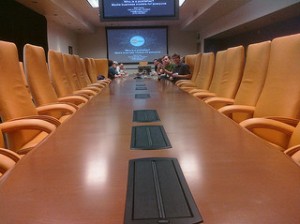 Human beings are very visual. We’re physically and emotionally affected by what we see. An image might make us feel something deeply or it might motivate us to take some kind of action. Images can stand alone or greatly enhance words, and you can use them in your brand marketing efforts to boost results.
Human beings are very visual. We’re physically and emotionally affected by what we see. An image might make us feel something deeply or it might motivate us to take some kind of action. Images can stand alone or greatly enhance words, and you can use them in your brand marketing efforts to boost results.
Visual branding has gotten a lot of attention in recent years as digital and mobile platforms have improved and made it easier and less expensive to add visuals to marketing campaigns across a broader set of media and distribution channels. Furthermore, research shows that visuals improve marketing campaign performance in both online and mobile spaces.
With that in mind, you need to prioritize visual branding as part of your integrated marketing strategy, and you need to convince your leadership team that investments should be made in the creation and procurement of high quality, unique visuals. Here are five primary ways visual branding can improve marketing results:
1. Visual Branding Evokes Emotions
Images can instantly elicit emotions that connect consumers to your brand. Think of ads you’ve seen for charitable organizations, particularly those dedicated to helping sick or starving children and abused animals. Visual branding is a cornerstone of nonprofit branding, but it can be applied to any brand. Take a look at Nike ads. Even Google has embraced visual, emotional branding in recent years with marketing campaigns that focus on visual storytelling.
2. Visual Branding Gets Noticed
People’s eyes are typically first attracted to motion (e.g. online video content or animated GIFs) or color (e.g., colorful images). A web page or print ad filled with words can be designed so white space and typeface draws consumers’ eyes through the copy. However, they’re far less likely to instantly click away or turn the page if a moving element or colorful image captures their attention.
3. Visual Branding Drives Sharing
Did you know that online content which includes an image typically gets more social media shares, particularly on Facebook, than content that does not include image? There is a reason why sites and tools like Vine and Instagram are so popular. People love to share visual content. Make sure you offer some visual content from your brand for them to share, too.
4. Visual Branding Is Memorable
Some images are hard to forget, but even the most mundane image increases memory and recognition for many people who are visual learners. If you rely on text alone, you’ll miss a segment of the consumer audience who is better able to recall images than words.
5. Visual Branding Is Quick and Easy to Consume
As the saying goes, “a picture is worth a thousand words.” While text can give context to images and tell a more complete brand story, an image can communicate a great deal very quickly. Today’s consumers move quickly, particularly online. Visual branding provides another way to communicate your messages to an audience that might never stop to read your content or messages.
How do you integrate visual branding into your marketing plan? Leave a comment and share your thoughts.
Image: Alfonso Romero
Susan Gunelius is the author of 10 marketing, social media, branding, copywriting, and technology books, and she is President & CEO of KeySplash Creative, Inc., a marketing communications company. She also owns Women on Business, an award-wining blog for business women. She is a featured columnist for Entrepreneur.com and Forbes.com, and her marketing-related articles have appeared on websites such as MSNBC.com, BusinessWeek.com, TodayShow.com, and more.
She has over 20 years of experience in the marketing field having spent the first decade of her career directing marketing programs for some of the largest companies in the world, including divisions of AT&T and HSBC. Today, her clients include large and small companies around the world and household brands like Citigroup, Cox Communications, Intuit, and more. Susan is frequently interviewed about marketing and branding by television, radio, print, and online media organizations, and she speaks about these topics at events around the world. You can connect with her on Twitter, Facebook, LinkedIn, or Google+.


